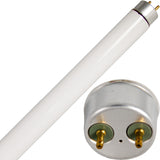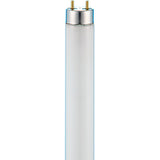How UV-B Inhibits Photoreactivation in Ultraviolet Disinfection
Posted by Nick on for ProLampSales
Most of the impact of ultraviolet disinfection is in the UV-C range. UV-B has a much lower lethality rate for microbes than UV-C.
However, a phenomenon called "photoreactivation" can impact disinfection. And UV-B can help prevent photoreactivation of pathogens.
What Is Photoreactivation?
Photoreactivation is the process whereby microorganisms are exposed to light in the visible spectrum after exposure to ultraviolet germicidal irradiation and begin to repair themselves.
Photoreactivation can lead to a portion of the population of microbes recovering from the ultraviolet light exposure.
Visible Light & Photoreactivation
Visible light is often present while UV-C air and surface systems are operating, which may decrease the effectiveness of the treatment.
One way to mitigate this effect is reducing or eliminating visible light in areas that are being treated with UV-C germicidal lights. This can be done most effectively in air purifiers using UVC in HVAC systems or air recirculation systems, or by closing doors and windows and turning off lights in rooms.
But for surface sanitation devices (handheld, free-standing, or surface-mounted) that are designed to operate during work hours, reducing visible light may be impossible.
How UV-B Can Inhibit Photoreactivation
This is where UV-B ultraviolet light may play an important role.
Studies have been done on photoreactivation of microbes, both with UV-C and broadband UV-C/UV-B wavelengths. Devices utilizing broadband ultraviolet light bulbs have prevented photoreactivation more than just exposure to UV-C.
The UV-B irradiation does not provide enough ultraviolet dosage to damage the cellular structure of pathogens at the same rate as UV-C. But UV-B can damage the enzymes microbes use to repair themselves. The peak of ultraviolet enzyme absorption is in the UV-B range.
For high-powered UV-C disinfection, the damage to the pathogens may be so high that photoreactivation is impossible, eliminating any need for UV-B exposure.
However, if an area can not be kept dark while ultraviolet germicidal light is being applied, adding some UV-B exposure may contribute to the overall sanitation process of using ultraviolet equipment.
The Bottom Line on UV-B and Photoreactivation
It should also be noted that not as much research has been done on photoreactivation in air/surface applications as in water purification. Also, relative humidity can play a role, where higher RH can lead to more photoreactivation. Finally, different pathogens have different rates of photoreactivation, and photoreactivation does not necessarily make the microbes infectious again.
While more research needs to be done on photoreactivation and its effect on survival rates of various types of pathogens, if it is a cause of concern, adding some UV-B exposure or increase the UV-C intensity are two methods for reducing the risk.
- Posted in Health, Ultraviolet Light
Featured Products (View All)
0 Comments




